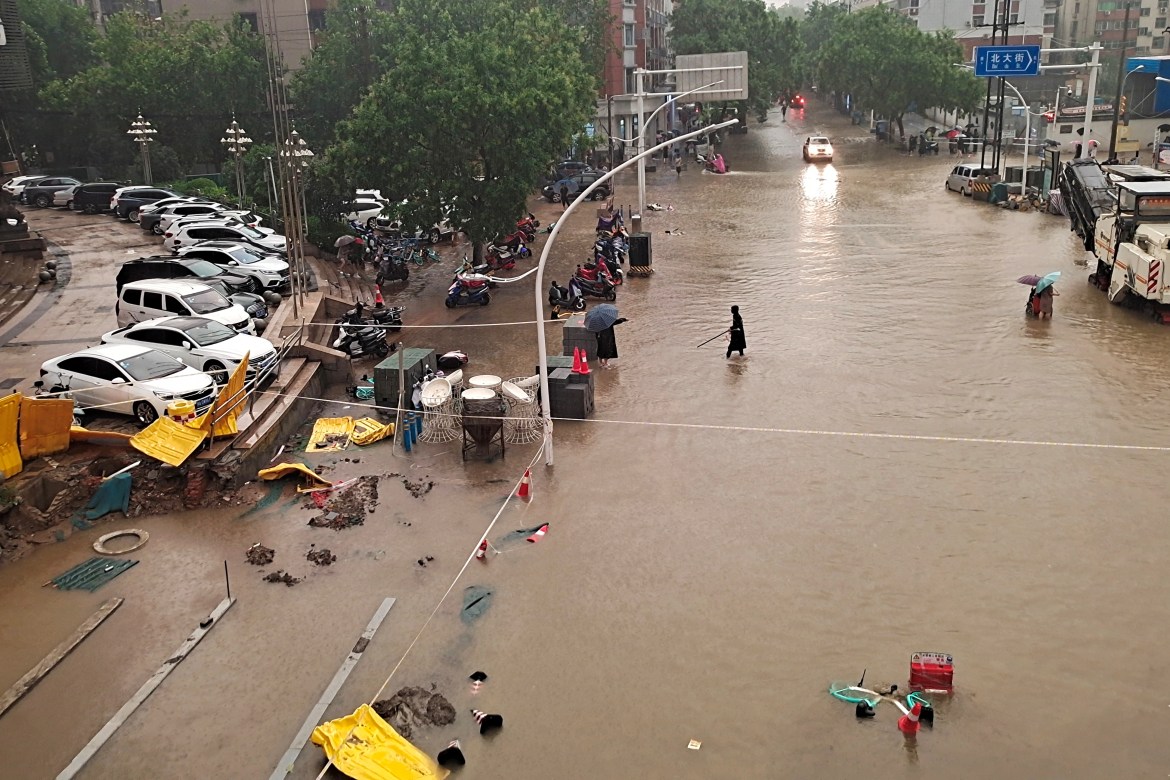
CNBC가 전한 소식이다.
중국의 심한 태풍과 홍수가 보험사들의 이익을 해치고 있으며, 이를 통해 중국의 자연재해 보험 제도의 부족을 부각되고 있다.
S&P Global Ratings 보고서에 따르면 지난 8월 3일 허난에서 발생한 홍수로 17억 달러의 사상 최대 규모의 단일 사건 보험 손실이 발생하여 재난 및 상해 보험을 제공하는 회사에 영향을 미쳤다. 이 때 당시 내린 폭우는 1951년 이래 가장 많은 강우량을 기록했다.
이 지역에서 발생한 홍수와 산사태로 300명 이상이 사망했다고 국영 타블로이드 글로벌 타임즈(Global Times)는 보도했다. 관영 신화통신의 공식 자료에 따르면 100만 헥타르 이상의 농작물이 피해를 입었으며 3만 5천 채 이상의 가옥이 파괴되었고 1,337억 위안(206억 3000만 달러) 이상의 직접적인 손실이 발생했다고 밝혔다.
피치(Fitch Ratings)는 7월 27일자 보고서에서 “우리는 (헤난) 홍수로 인한 보험금 청구가 2020년에 작성된 중국 전체 생명보험료 중 약 0.7%인 80억엔을 초과할 것으로 예상한다”고 말했다.
보고서는 “피치는 보험금 청구 건수가 계속 급증하고 있기 때문에 홍수 손실이 보험업계에 중대한 영향을 미칠 것으로 보고 있다”고 말했다.
수십 년 동안 중국은 허리케인, 지진, 홍수와 같은 자연 재해에 시달려왔다. 허난성 홍수 외에도 이달 초 쓰촨성에서도 폭우와 홍수로 8만 명 이상이 대피했다.
그러나 세계은행 보고서에 따르면 중국의 재난적 손실 시스템의 보상에서 보험이 여전히 취약한 역할을 하고 있다고 한다.
해당 보고서는 재난과 관련된 손실에 대한 보상은 정부 구호 프로그램과 공공 기부에 크게 의존해 왔다고 밝혔다. 대규모 재난에서 보험금 청구는 직접적인 경제적 손실의 1% 미만을 차지한다고 밝혔다.
S&P에 따르면 중국의 보험사들은 이러한 재난의 빈도를 고려하지 않고 있으며 보험상품을 판매하기 위해 계속 구식 모델을 사용하고 있다. 게다가 재해 보험에 대한 대중의 인식이 부족하여 중국인들은 보험을 이용하지 않으려 하고 있다.
S&P는 보험 부족 문제는 두 가지 차원에서 해결될 수 있다고 말했다.
S&P는 개인 관점에서 지난 2년 동안의 기록적인 홍수 수준이 ‘대중적 인식 제고’로 이어져 보험 보호 필요성을 인식하는데 도움이 될 수 있다고 전망하고 있다.
최근 기상 악화로 정부 차원에서도 파장이 일고 있다. S&P는 중국이 재해 보험 보급을 촉진하기 위해 다시 노력을 기울이고 있다고 전했다.
세계은행 프로그램인 GFDRR(Global Facility for Disaster Reduction and Recovery)에 따르면 재난 보험에 대한 국민들의 낮은 인식을 극복하기 위해 닝보, 선전, 광둥의 일부 지자체가 시민을 대신하여 보험을 구입하고 있다고 한다.
Severe rainstorms and flooding in China are hurting the profits of insurance companies, and highlight the shortfalls of the country’s natural disaster insurance system.
Flooding in Henan last month resulted in a record single-event insurance loss of $1.7 billion, impacting companies that provide property and casualty insurance, according to a S&P Global Ratings report which tracked losses as of Aug. 3.
The central province of Henan experienced its highest recorded rainfall since 1951, when the first records were available, state weather officials said.
Flooding and mudslides in the region claimed over 300 lives, reported state-backed tabloid Global Times. More than 1 million hectares of crops were damaged, and over 35,000 houses were destroyed across the province, state news agency Xinhua reported, citing official data. Direct losses of over 133.7 billion yuan ($20.63 billion) were incurred, the report said.
“We expect insurance claims from the (Henan) flooding … to exceed CNY8 billion ($1.23 billion), or about 0.7% of China’s total non-life direct premiums written in 2020,” Fitch Ratings said in a report dated July 27.
“Fitch believes the flooding losses will be material to the insurance industry as reported claims have continued to surge,” the report said.
For decades, China has been plagued by natural disasters like hurricanes, earthquakes and floods.
In addition to the Henan floods, more than 80,000 people in Sichuan province were also evacuated earlier this month due to heavy rains and floods.
However, insurance still plays a weak role in China’s compensation for catastrophic loss system, according to a World Bank report.
Compensations for losses related to catastrophic events have largely relied on government relief programs and public donations — insurance claims make up less than 1% of direct economic losses in large scale disasters, the report said.
According to S&P, insurance companies are not factoring in the frequency of these calamities and continue to use outdated models to sell insurance packages.
Adding to that, there is a lack of public awareness and Chinese citizens are not willing to accept disaster insurance, a separate study on social factors and insurance shows.
The problem with underinsurance can be addressed on two levels, S&P said.
From an individual perspective, S&P predicts that the record level of flooding in the past two years could lead to a “greater awareness among the public” and help them see the need for insurance protection.
Recent extreme weather events have also stirred things at the government level. China has renewed its push to boost catastrophe insurance penetration, S&P said.
To overcome the public’s low awareness of disaster insurance, some local governments – including those in Ningbo, Shenzhen and Guangdong have been purchasing polices on behalf of their citizens, according to to the Global Facility for Disaster Reduction and Recovery (GFDRR), a World Bank program.
![]()



![[물류로 세상보기] 알리는 사실 ‘한국 시장’에 관심 없을 지 모른다](https://mobiinsidecontent.s3.ap-northeast-2.amazonaws.com/kr/wp-content/uploads/2024/06/14182623/CK_ti246a32205_n_l-218x150.jpg)
![[IT트렌드 속성 가이드북] 앤스로픽 AI에 투자한 아마존](https://mobiinsidecontent.s3.ap-northeast-2.amazonaws.com/kr/wp-content/uploads/2024/04/18132440/%EB%8B%A4%EC%9A%B4%EB%A1%9C%EB%93%9C-1-5-218x150.png)
![[Tech/Biz Trend] 요즘 뜨거운 알리와 테무, 왜 그럴까?](https://mobiinsidecontent.s3.ap-northeast-2.amazonaws.com/kr/wp-content/uploads/2024/02/27101910/20240227_101858-218x150.png)